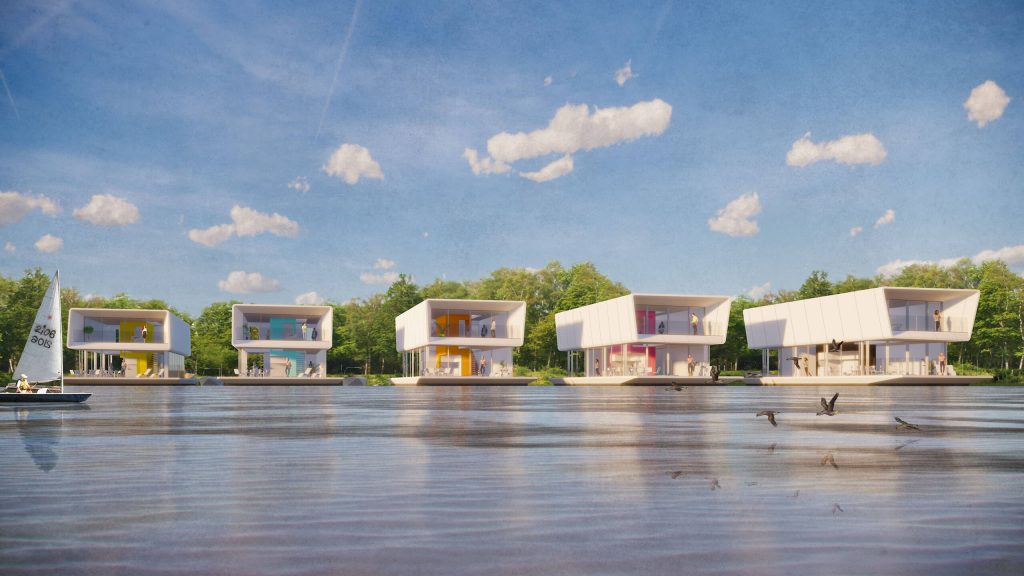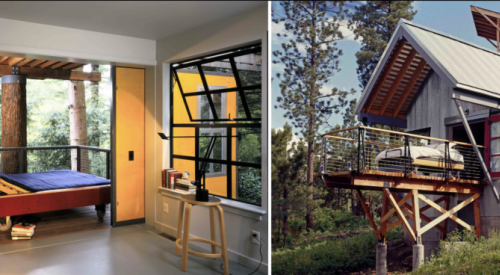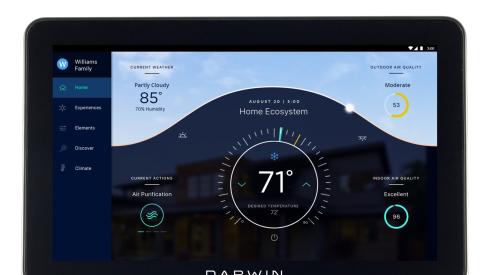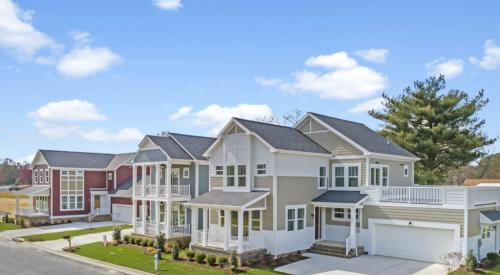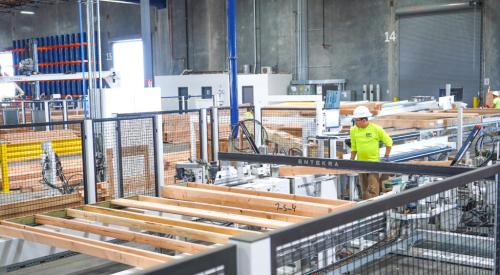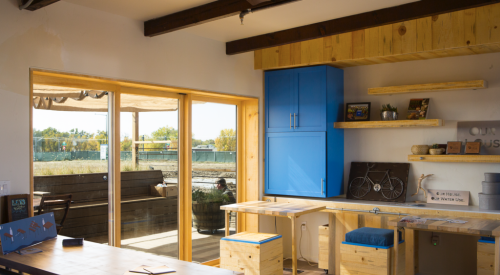Designed in response to climate change concerns, U.S. architectural firm Grimshaw and Dutch concrete manufacturing specialist Concrete Valley have unveiled their Modular Water Dwellings concept.
These concrete modular homes apply the traditional houseboat concept to the modern highly-resilient, sustainable coastal home. The two-story dwellings sit on a concrete pontoon structure that is stable yet buoyant.
From Grimshaw: "With a growing global population and an increase of people living in cities, high land values are causing a shortage of affordable housing in urban areas. Grimshaw and Concrete Valley’s Modular Water Dwellings have been conceived as a potential solution to this problem, offering affordable housing, free of the constraints of land-based construction and resilient to the mounting threat of flooding from rising sea-levels."
Grimshaw has been recognized with over 200 awards for their innovative and environmentally efficient designs. Recently, the Australian Institute of Architects awarded them their top prize for Grimshaw's sustainable products; Grimshaw also won the Shenzhen Transport Hub Competition in April of this year, due to their aspirational proposal for an eco-friendly transport hub.
Concrete Valley, on the other hand, has been creating innovative projects since 1888, and has proven itself as a leader in concrete design.
So What Are These Modular Homes, Exactly?
Let's take a closer look at the Concrete Modular Homes (images and select text courtesy of Grimshaw):
The lightweight concrete structures feature a modern design with an open-deck layout and living space on level one, and bedrooms and a balcony on level two.

The homes will use “minimal energy,” according to the design team, thanks to enhanced insulation throughout and renewable energy features: solar roof panels and heat exchangers built into base boxes below the waterline. The water will also be used to the homes' advantage through integrated cooling and rainwater harvesting systems.

Near zero energy use could be accomplished by developing a communal energy supply.

The dwellings will be constructed completely in a factory and then transported along the waterways to the final destination. This approach eliminates the need for site work and reduces the overall environmental impact of the project.

Grimshaw and Concrete Valley believe this dwelling concept would promote active lifestyles and a strong sense of community among the residents.

Are Concrete Houses Cheaper to Build?
So, the answer to the question "are concrete houses cheaper to build?" is this: yes, in the long run. The Modular Water Dwellings are constructed in a way that minimizes waste and harmful environmental impacts, while maintaining industry standardised components for increased manufacturing efficiency. Because these concrete modular homes are built with such durable materials, Concrete Valley ensures that they will last for years to come.


